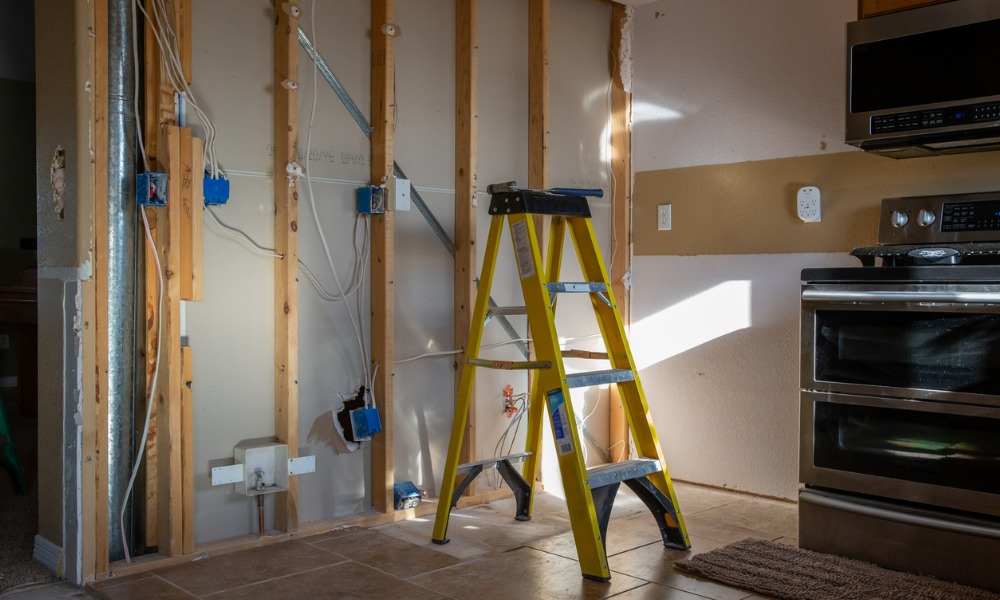
Employer had no list of payments; controlled all aspects of work

The worker was originally from India and immigrated to Canada in 2020. He did not work until he obtained a work permit in June 2021. Shortly thereafter, he started working for Karam Renovation and Construction. His work involved tile installation and painting, although he had no construction experience at all.
The worker only had a work permit, not a business permit, so he could not open or register a business in Canada.
According to Karam, the worker was hired as a subcontractor for his specific skills in tile installation and painting. However, the worker claimed that any skills he developed in construction work cam from direction he received from Karam.
According to the worker, he performed whatever tasks that the owner assigned him and the owner supervised him. He said that the owner usually picked him up on the way to work at the same time – although the owner claimed that there were no fixed hours of work – and often collected supplies and tools on the way to job sites. He said the arrangement was for minimum wage for three months and a slight raise after that.
The worker also said the if he wanted time off, he had to get permission from Karam.
The owner said that they would settle on a price for painting and he would pay a price per square foot for tile installation, but the worker contended that he never quoted a price for any job and he was paid by the hour.
However, Karma paid the worker in cash only. There was no written agreement for their relationship or their financial transactions and the worker didn’t provide any invoices. However, the worker recorded his hours worked and location for each day on his own.
The worker alleged that he asked the owner to pay his wages several times, but the owner usually gave him “pocket money,” saying that clients weren’t paying Karam so the company wasn’t paying wages.
The owner said the worker used some of his own tools, but he didn’t identify any. The worker said he didn’t use any of his own tools and he didn’t work for any other employer.
The worker worked six days a week, according to his records, until Oct. 8, 2022. By that time, Karam had paid him just over $1,000 at that point, so he filed an employment standards complaint seeking unpaid wages.
Based on the worker’s records, an employment standards officer ordered Karam pay the worker wages, overtime pay, public holiday pay, premium pay, and vacation pay totalling $17,768.25 plus administrative fees.
Karam sought a review of the order to pay, arguing that the worker was not an employee and it only owed him $4,000 for work the worker had performed as a subcontractor. The company claimed that it had agreed to pay the worker $10,300 and it had already paid the worker $6,500 at a house that Karam had renovated for the owner’s friend after the friend provided a $7,000 payment. The friend testified that he handed the money to the owner and saw the owner pay the worker in front of him.
The worker denied receiving any money at the friend’s house, as he only received small payments of “pocket money.”
Karam provided a document it created outlining payments to the worker for his services, which the owner said was derived from project records. The document referred to eight projects for which the worker was paid $10,300, but did not indicate when the payments were made.
Karam said that the worker worked at his friend’s house for a week and a half, while the friend said four days. However, the worker’s records indicated that he worked there on 31 occasions, including two dates for 12 and 11.5 hours, respectively.
The board’s employment standards appeal division disagreed with Karm’s characterization of the worker as a subcontractor, as there was no evidence of the worker having “the status of anything other than an employee in his relationship with Karam Renovation.”
The board noted that the Ontario Employment Standards Act, 2000 (ESA) defined “employee” as “a person who performs any work for or supplies any services to any employer for wages.” In addition, simply the agreement of the parties is not enough to establish that an employee is to be treated as an independent contractor, said the board.
The board found that the worker was not in business on his own account and worked for minimum wage for Karam. He had no clients or work of his own and his only involvement with Karam was as part of the company’s labour on its worksites, said the board.
The board also found that Karam dictated and supervised all the work that the worker performed, as well as the hours he worked – to the point where the owner picked him up to take him to the worksite. Karam also did not provide any evidence to contradict the worker’s claim that the company supplied all of the tools.
“There was nothing disclosed about the working relationship between [Karam] and the [worker] that differed appreciably from what one would expect to obtain between an employer and an employee engaged in the activities undertaken by [Karam],” said the board.
The board also found that Karam supplied no evidence supporting its claim that it had paid $6,500 to the worker, while the worker had kept diligent records of the work he performed. As a result, there was no reason to alter the employment standards officer’s finding based on the worker’s records, said the board.
The board dismissed Karam’s application and upheld the order to pay the worker more than $17,000 in unpaid wages. See Karam Renovation & Construction Inc. v. Harjit Singh, 2023 CanLII 7747.